-
 Bitcoin
Bitcoin $107,443.3008
-1.17% -
 Ethereum
Ethereum $2,494.2503
-0.63% -
 Tether USDt
Tether USDt $1.0003
0.00% -
 XRP
XRP $2.2496
2.23% -
 BNB
BNB $658.7569
0.63% -
 Solana
Solana $154.9826
1.94% -
 USDC
USDC $1.0000
0.01% -
 TRON
TRON $0.2799
1.07% -
 Dogecoin
Dogecoin $0.1659
-1.78% -
 Cardano
Cardano $0.5745
0.25% -
 Hyperliquid
Hyperliquid $39.7005
0.13% -
 Bitcoin Cash
Bitcoin Cash $519.5989
3.78% -
 Sui
Sui $2.7874
-2.40% -
 Chainlink
Chainlink $13.3762
-1.69% -
 UNUS SED LEO
UNUS SED LEO $9.0784
-0.64% -
 Avalanche
Avalanche $17.9846
-2.81% -
 Stellar
Stellar $0.2390
-0.06% -
 Toncoin
Toncoin $2.9028
0.25% -
 Shiba Inu
Shiba Inu $0.0...01147
-2.17% -
 Litecoin
Litecoin $86.6956
-1.27% -
 Hedera
Hedera $0.1508
-0.50% -
 Monero
Monero $322.6222
3.26% -
 Polkadot
Polkadot $3.4124
-2.99% -
 Dai
Dai $0.9999
0.00% -
 Bitget Token
Bitget Token $4.5434
-1.97% -
 Ethena USDe
Ethena USDe $1.0002
0.00% -
 Uniswap
Uniswap $7.1562
-2.61% -
 Aave
Aave $275.8830
-1.02% -
 Pepe
Pepe $0.0...09790
-4.04% -
 Pi
Pi $0.5018
-5.09%
How do I view the fee rate on Gemini?
To view your specific fee rate on Gemini, calculate your 30-day trading volume and refer to the fee schedule under the "Fees" tab on the platform.
Apr 04, 2025 at 04:56 pm
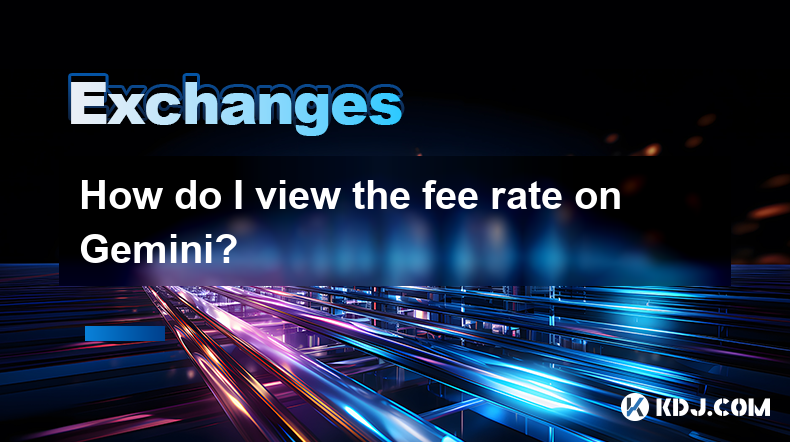
Viewing the fee rate on Gemini is an essential step for any user looking to understand the costs associated with trading on the platform. Gemini, a well-known cryptocurrency exchange, offers a transparent fee structure that varies based on the type of transaction and the user's trading volume. In this article, we will guide you through the process of viewing the fee rate on Gemini, ensuring you have all the information you need to make informed trading decisions.
Accessing the Gemini Platform
To begin, you need to access the Gemini platform. This can be done by visiting the Gemini website at www.gemini.com. If you are not yet a registered user, you will need to create an account. For existing users, simply log in using your credentials.
- Visit the Gemini website at www.gemini.com.
- Log in to your account using your email and password.
Navigating to the Fee Schedule
Once logged in, you can easily find the fee schedule. Gemini provides a dedicated section for this information, ensuring that users can quickly access it without navigating through multiple pages.
- Click on the "Fees" tab located at the top of the page. This will direct you to the fee schedule page where you can view all the relevant information.
Understanding the Fee Structure
Gemini's fee structure is based on a tiered system, which means that the fees you pay depend on your trading volume over the past 30 days. The platform distinguishes between maker and taker fees, with maker fees generally being lower than taker fees.
- Maker fees are charged when you add liquidity to the market by placing an order that does not immediately execute.
- Taker fees are charged when you remove liquidity from the market by placing an order that immediately executes against an existing order.
Viewing Your Specific Fee Rate
To view your specific fee rate, you need to know your trading volume over the past 30 days. Gemini provides a tool to help you calculate this.
- Navigate to the "Trading" section of your account.
- Click on "Order History" to see your recent trades.
- Calculate your total trading volume over the past 30 days by summing up the volume of all your trades.
Once you have your trading volume, you can refer back to the fee schedule to determine your specific fee rate.
Checking Fees for Different Trading Pairs
Gemini supports various trading pairs, and the fee rates can vary slightly depending on the pair you are trading. It's important to check the fees for the specific pair you are interested in.
- Go back to the "Fees" tab.
- Scroll down to find the section on trading fees.
- Look for the trading pair you are interested in, such as BTC/USD or ETH/BTC, and note the corresponding fee rates.
Understanding Withdrawal and Deposit Fees
In addition to trading fees, Gemini also charges fees for withdrawals and deposits. These fees can vary based on the cryptocurrency and the method of withdrawal or deposit.
- Navigate to the "Fees" tab again.
- Scroll down to the section on withdrawal and deposit fees.
- Note the fees for the specific cryptocurrency you are interested in. For example, the fee for withdrawing Bitcoin might be different from the fee for withdrawing Ethereum.
Using the Gemini API to View Fees
For more advanced users, Gemini offers an API that can be used to programmatically access fee information. This can be particularly useful for those who are developing trading bots or other automated systems.
- Visit the Gemini API documentation on the Gemini website.
- Look for the section on fee endpoints.
- Use the provided endpoints to retrieve fee information programmatically.
Viewing Fees on the Gemini Mobile App
If you prefer to use the Gemini mobile app, you can also view fee rates from your mobile device. The process is similar to the web version but tailored for mobile use.
- Open the Gemini app on your smartphone.
- Tap on the "More" icon at the bottom right of the screen.
- Select "Fees" from the menu to view the fee schedule.
Frequently Asked Questions
Q: Can I reduce my trading fees on Gemini?
A: Yes, you can reduce your trading fees on Gemini by increasing your trading volume. As your volume increases, you move up the fee tiers, which results in lower fees. Additionally, Gemini occasionally offers promotions and discounts that can help reduce your fees.
Q: Are there any hidden fees on Gemini?
A: No, Gemini is known for its transparency. All fees, including trading, withdrawal, and deposit fees, are clearly listed on the fee schedule page. There are no hidden fees that you need to be aware of.
Q: How often does Gemini update its fee schedule?
A: Gemini updates its fee schedule periodically, but changes are not very frequent. It's a good practice to check the fee schedule regularly to stay informed about any updates.
Q: Can I view historical fee rates on Gemini?
A: Gemini does not provide a direct way to view historical fee rates through the platform. However, you can keep records of the fee schedule at different points in time if you need to track changes.
Disclaimer:info@kdj.com
The information provided is not trading advice. kdj.com does not assume any responsibility for any investments made based on the information provided in this article. Cryptocurrencies are highly volatile and it is highly recommended that you invest with caution after thorough research!
If you believe that the content used on this website infringes your copyright, please contact us immediately (info@kdj.com) and we will delete it promptly.
- Bitcoin, Bitfinex, and Acceleration: Decoding the Crypto Crossroads
- 2025-07-01 12:50:11
- SOL, XRP, LTC ETFs: Are We on the Cusp of Crypto History?
- 2025-07-01 12:50:11
- BNB Chain's Maxwell Upgrade: Sub-Second Blocks and a Whole Lotta Speed!
- 2025-07-01 13:10:12
- Bitcoin, Ethereum, Crypto Decline? Nah, Just a New York Minute!
- 2025-07-01 13:10:12
- Coinpass: The Gold-Standard Crypto Platform for UK Businesses
- 2025-07-01 12:30:12
- Tokenized ETFs, Robinhood, and Europe: A New Era of Finance?
- 2025-07-01 12:30:12
Related knowledge
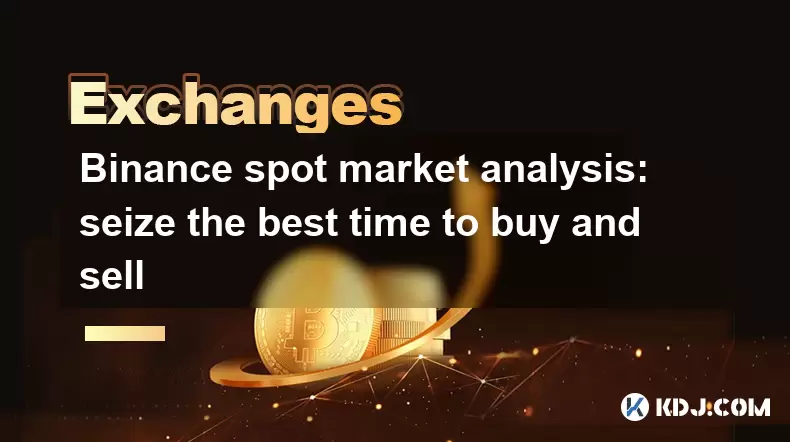
Binance spot market analysis: seize the best time to buy and sell
Jun 19,2025 at 04:56pm
Understanding the Binance Spot MarketThe Binance spot market is one of the most popular platforms for cryptocurrency trading globally. It allows users to trade digital assets at current market prices, making it essential for traders aiming to buy low and sell high. Unlike futures or margin trading, spot trading involves direct ownership of the asset aft...
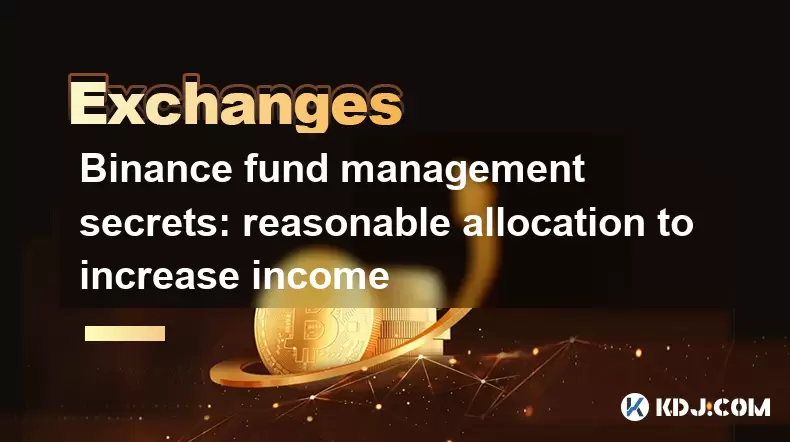
Binance fund management secrets: reasonable allocation to increase income
Jun 22,2025 at 02:29pm
Understanding Binance Fund ManagementBinance fund management involves strategic allocation of your cryptocurrency assets to optimize returns while managing risk. The key to successful fund management lies in understanding how different investment options on the Binance platform can be utilized to create a diversified portfolio. This includes spot tradin...

Binance trading pair selection skills: find the best buying and selling combination
Jun 23,2025 at 02:49am
Understanding the Basics of Trading Pairs on BinanceBefore diving into trading pair selection skills, it's essential to understand what a trading pair is. On Binance, a trading pair refers to two cryptocurrencies that can be traded against each other. For example, BTC/USDT means Bitcoin is being traded against Tether. Each trading pair has its own liqui...

Binance new coin mining strategy: participate in Launchpool to earn income
Jun 23,2025 at 11:56am
What is Binance Launchpool and how does it work?Binance Launchpool is a feature introduced by the world’s largest cryptocurrency exchange, Binance, to allow users to earn new tokens through staking. This platform enables users to stake their existing cryptocurrencies (such as BNB, BUSD, or other supported assets) in exchange for newly launched tokens. T...
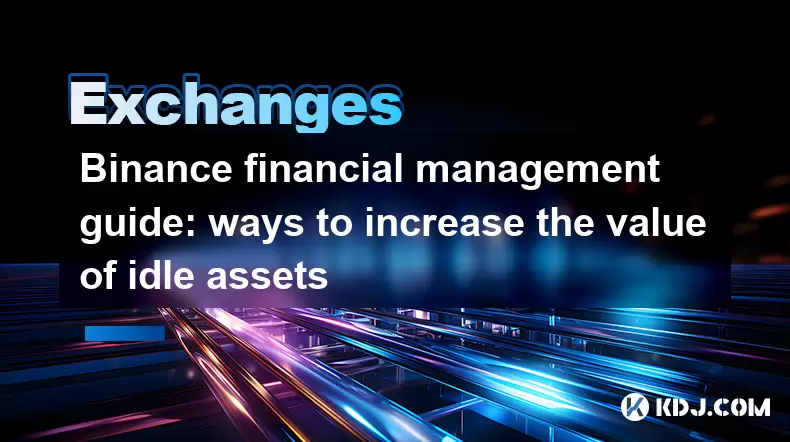
Binance financial management guide: ways to increase the value of idle assets
Jun 19,2025 at 11:22pm
Understanding Idle Assets in the Cryptocurrency SpaceIn the fast-paced world of cryptocurrency, idle assets refer to digital currencies that are not actively being used for trading, staking, or yield farming. Holding these funds in a wallet without utilizing them means missing out on potential growth opportunities. Binance, as one of the leading platfor...
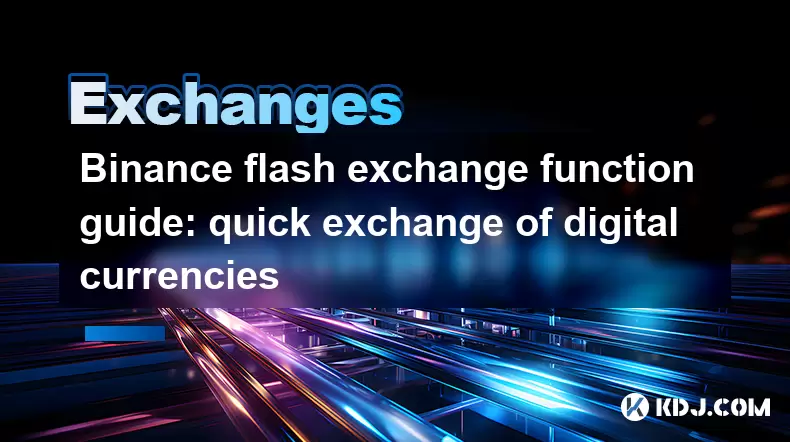
Binance flash exchange function guide: quick exchange of digital currencies
Jun 23,2025 at 12:29pm
What is the Binance Flash Exchange Function?The Binance Flash Exchange function is a powerful tool designed to allow users to instantly swap between supported cryptocurrencies without the need for placing traditional buy/sell orders. This feature simplifies the trading process by offering a direct exchange mechanism, eliminating the requirement to conve...

Binance spot market analysis: seize the best time to buy and sell
Jun 19,2025 at 04:56pm
Understanding the Binance Spot MarketThe Binance spot market is one of the most popular platforms for cryptocurrency trading globally. It allows users to trade digital assets at current market prices, making it essential for traders aiming to buy low and sell high. Unlike futures or margin trading, spot trading involves direct ownership of the asset aft...

Binance fund management secrets: reasonable allocation to increase income
Jun 22,2025 at 02:29pm
Understanding Binance Fund ManagementBinance fund management involves strategic allocation of your cryptocurrency assets to optimize returns while managing risk. The key to successful fund management lies in understanding how different investment options on the Binance platform can be utilized to create a diversified portfolio. This includes spot tradin...

Binance trading pair selection skills: find the best buying and selling combination
Jun 23,2025 at 02:49am
Understanding the Basics of Trading Pairs on BinanceBefore diving into trading pair selection skills, it's essential to understand what a trading pair is. On Binance, a trading pair refers to two cryptocurrencies that can be traded against each other. For example, BTC/USDT means Bitcoin is being traded against Tether. Each trading pair has its own liqui...

Binance new coin mining strategy: participate in Launchpool to earn income
Jun 23,2025 at 11:56am
What is Binance Launchpool and how does it work?Binance Launchpool is a feature introduced by the world’s largest cryptocurrency exchange, Binance, to allow users to earn new tokens through staking. This platform enables users to stake their existing cryptocurrencies (such as BNB, BUSD, or other supported assets) in exchange for newly launched tokens. T...

Binance financial management guide: ways to increase the value of idle assets
Jun 19,2025 at 11:22pm
Understanding Idle Assets in the Cryptocurrency SpaceIn the fast-paced world of cryptocurrency, idle assets refer to digital currencies that are not actively being used for trading, staking, or yield farming. Holding these funds in a wallet without utilizing them means missing out on potential growth opportunities. Binance, as one of the leading platfor...

Binance flash exchange function guide: quick exchange of digital currencies
Jun 23,2025 at 12:29pm
What is the Binance Flash Exchange Function?The Binance Flash Exchange function is a powerful tool designed to allow users to instantly swap between supported cryptocurrencies without the need for placing traditional buy/sell orders. This feature simplifies the trading process by offering a direct exchange mechanism, eliminating the requirement to conve...
See all articles

























































































